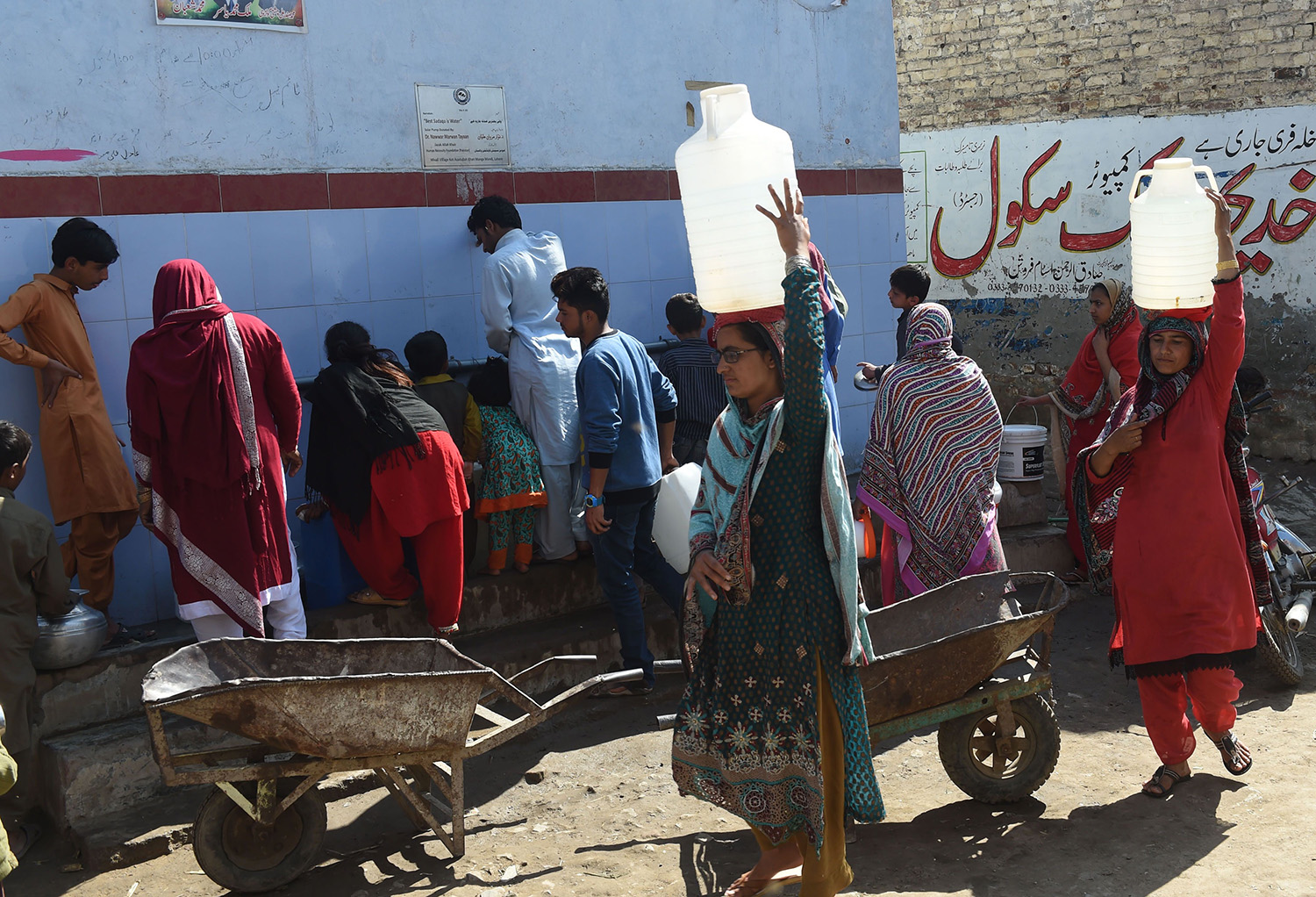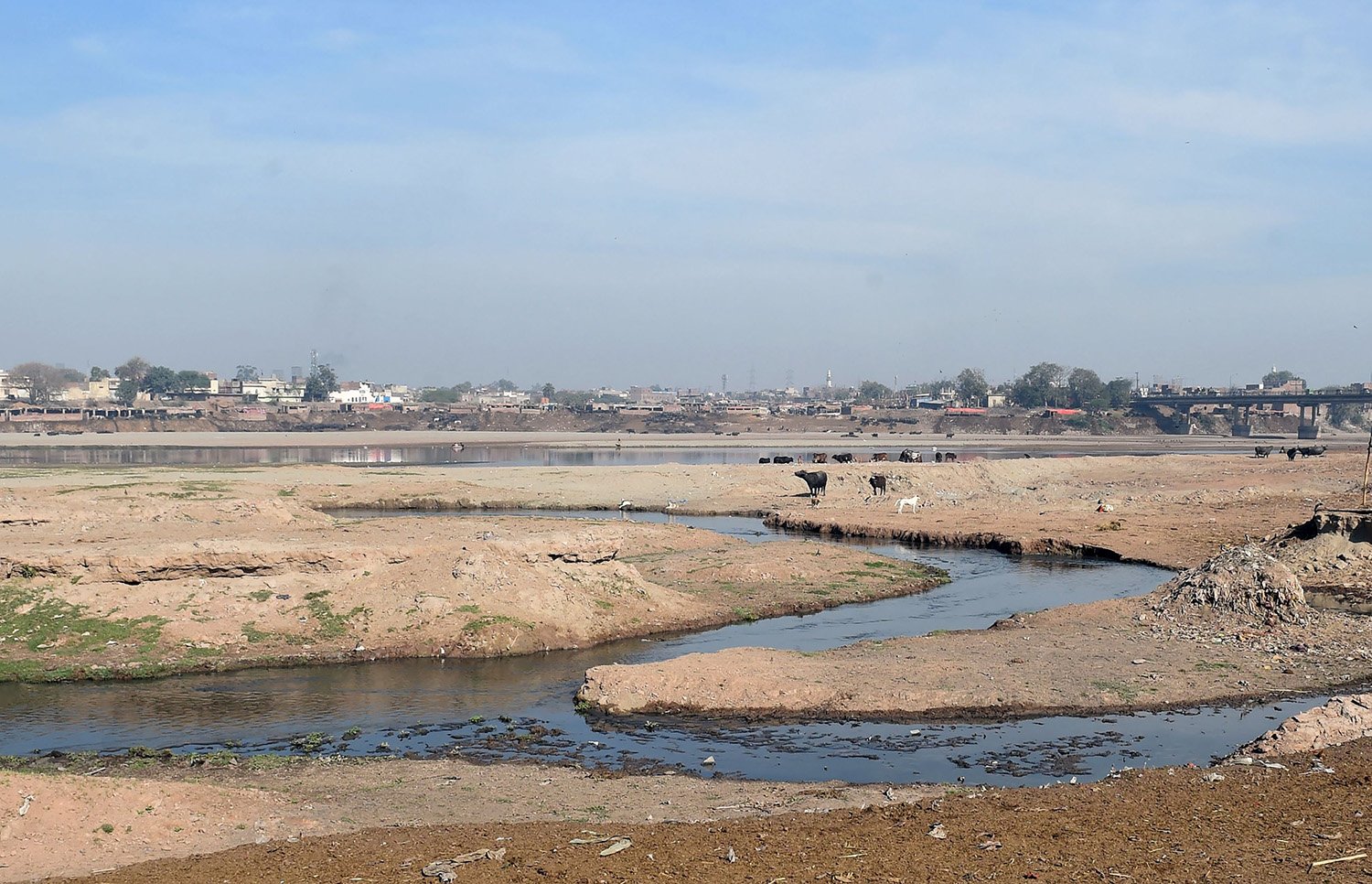Pakistan is heading towards a momentous and great exigency: a water crisis. It isn’t a secret. All stakeholders — the government, the academia, civil society and the general public — are aware of the impending challenges of water scarcity. Yet, not much is being done.
Pakistan’s projected population in 2050, according to the United Nations, will be 263 million. More people means more demand for water. Which is why it’s the need of the hour to put serious thought into how the government will provide adequate water for agriculture, industry and human consumption in the face of rapidly dwindling reserves.
The Himalayan glacier, whose ice melt replenishes the Indus River’s annual freshwater, is receding by about one metre — the approximate equivalent of 3.3 feet — per year, due to the climatic impacts of global warming. This phenomenon has had a staggering impact on Pakistan’s water availability. In just 1950, Pakistan had around 5,000 cubic meters (m3) per capita per year of freshwater resources. In 2002, its supplies shrunk to only 1,500 m3. To put that number in perspective, around 1,000 m3 is when a country is declared to be water scarce.

The inherent link between climate change and water scarcity is most pronounced in Punjab. The 2017 population census put the number of people in Punjab at 110 million, making it the most populous province of the country. With its growing population, the province risks vulnerability, with a future marked by climate unpredictability and water insecurity.
In terms of numbers, Punjab hosts 74.1 per cent of the total irrigated land of Pakistan and supplies more than 50 per cent of Pakistan’s total agricultural output (Punjab Development Statistics, 2014). A large portion of the Indus River basin — the main source of fresh water and the key irrigation artery across Pakistan — runs in Punjab. This province, employing a complex and extensive surface irrigation system, uses most of its fresh water available for irrigation purposes; and is the major contributor towards national agricultural output. Since Punjab contributes a significant chunk of the food requirements of the country, it is often referred to as the ‘breadbasket’ of Pakistan.
To prevent further worsening of Punjab’s water situation, the onus is on the Government of Punjab to take swift action in combatting its water-related risks. What can it do? Here are some options:
Allocate budget to ensure water security: Water is a cross-cutting issue and needs to be integrated into the planning and sub/sectoral actions across the board. Thus, there is an urgent need to allocate resources for climate resilient development in Punjab. Although devising an informed provincial climate change policy is an absolute necessity, detailed action plans and specific budget allocations alone will be good starting points.
Improve distribution of water-related information: Information is key. Unfortunately, the current sources of information dissemination related to climatic impact on water are not effective. There is a need for greater efficiency in information flows, in addition to being more widespread and available at zero cost. The development of a web portal can help facilitate the dissemination of such information.
Integrate drainage and irrigation to control salinity and waterlogging: Vast stretches of land are lost to salinity and waterlogging in Punjab, making it one of the greatest impediments to increased crop production and achieving food security. The absence of proper drainage system chokes the Indus Basin’s massive irrigation structure through waterlogging and salinity. There is a need to integrate an extensive drainage system with our irrigation system. Investments in irrigation methods/technologies which prevent deep drainage are the only viable and sustainable option to get rid of waterlogging and salinity on a permanent basis.
Develop institutions to foster water security: Poor countries and their citizens will be most impacted by water scarcity due to a lack of strong institutions. Therefore, a strong institutional base for research, policy formulation and implementation is required to implement key enabling features, such as water pricing and land tenure systems. These are essential for developing resilience to climatic impacts on water and food security. Moreover, any institutional development and implementation should be preceded by collaboration and consensus building among all relevant stakeholders.
Improve groundwater management and policy framework: Punjab faces multiples challenges in its groundwater management, governance, policy and regulation. Over-abstraction of groundwater, without considering quality, quantity and cost, has led to rapid depletion of this vital resource. There is a lack of capacity and institutional responsibility over the regulation of groundwater, and that informed policy and decision-making for better scientific information and understanding of the characteristics of underlying aquifers was needed. Thus, in order to tackle Punjab’s looming water threats, the Government of Punjab must start viewing groundwater reserves as strategic assets, just the way nuclear capability or glacial waters are.

As one of the most water-stressed countries in the world, and not far from being labelled water-scarce, Pakistan’s faces a major existential threat — one that could possibly hobble its already modest economic growth. There is a wealth of evidence that signals the need to develop an effective strategy to tackle this crisis. Pakistan’s socio-economic stability depends upon the very resource it now runs short of.
Punjab, being the most populous province of Pakistan, and the greatest contributor to agricultural growth, begs for most attention in this regard. Before matter gets worse, the Government of Punjab must chalk out a holistic water policy that will help conserve and manage the water resources from the Indus delta and groundwater reserves in the region. Most importantly, efforts must be made to allow Pakistan’s water resources to become a part of mainstream discourse, so that relevant stakeholders are able to work in congruence with each other on how to tackle Punjab’s looming water crisis.
Leadership for Environment and Development (LEAD) Pakistan is a knowledge-based organization working since 1995 to inform policy and engage policymakers, through conducting evidence-based research, building capacity, facilitating open dialogues and creating a global/regional/national network of professionals and organizations providing thought leadership in sustainable development.


